Every Lunar New Year, traditional cakes appear on dining tables across households. Let’s explore the deeper meaning of the various cakes we often enjoy daily, knowledge not everyone possesses.
Banh Chung
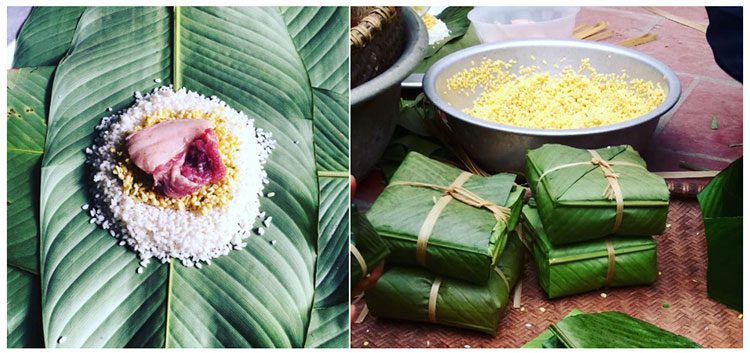
This cake is made from glutinous rice, mung beans, and fatty pork, wrapped in green dong leaves. (Photo: Dangtung_hn).
Banh Chung is a traditional cake from Northern Vietnam, an essential part of the Lunar New Year feast. This cake is made from glutinous rice, mung beans, and fatty pork, characterized by its green wrap of dong leaves.
People in the North often boil or fry Banh Chung until crispy, then dip it in soy sauce or fish sauce. This traditional cake dates back to the time of the Hung Kings, symbolizing the earth with its square shape. The tightly bound strings used to cut the cake represent the unity and bond among family members, as well as the connection of the entire nation.
The deeper significance of Banh Chung also lies in its filling. The high-quality glutinous rice symbolizes sustenance for humanity throughout history and represents Vietnam’s traditional wet rice agriculture. The green dong leaves wrapping the filling symbolize the nurturing and protective love of parents.
Banh Tet

People in the South wrap Banh Tet into a long cylindrical shape with evenly spread filling inside. (Photo: Thao243).
Banh Tet is a cake similar to Banh Chung from the North. For the Southern people, Banh Tet wrapped in banana or dong leaves, filled with pork, mung beans, and glutinous rice, is indispensable during the Tet celebrations.
Unlike Banh Chung, Southern people wrap Banh Tet into a long cylindrical shape with evenly spread filling. Banh Tet carries historical significance, symbolizing the image of a mother nurturing her children. Its presence during important celebrations serves as a reminder of parental gratitude at the beginning of the year. Thus, every Vietnamese child is reminded to be filial and remember their parents’ contributions. Southerners often enjoy Banh Tet with pickled vegetables and various herbs to balance the meal. Additionally, it can be served with fish sauce or other dipping sauces.
Banh Co
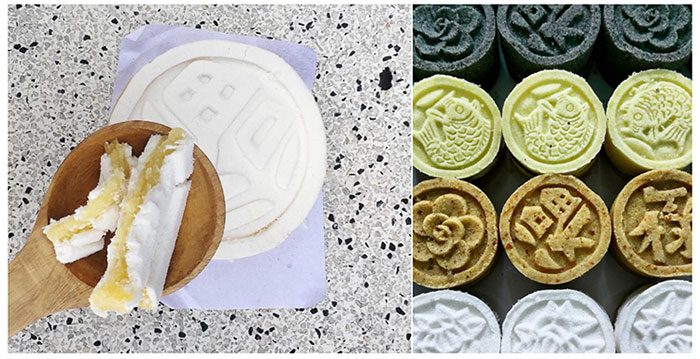
The ingredients for this cake are simple, made from glutinous rice flour, mung bean flour, and lotus seeds. (Photo: At_vo, uneboucheepour).
Banh Co, also known as Banh In, is a specialty from Hue. The traditional Tet atmosphere in Hue is always marked by the colorful presence of Banh Co, a clear sign of the festivities. Hue locals often enjoy Banh Co with hot tea to savor the cake’s delicate, sweet flavors.
The ingredients for making this cake are simple, consisting of glutinous rice flour, mung bean flour, and lotus seeds; however, the preparation process is quite elaborate. The history of Banh Co dates back to the Nguyen Dynasty, where these cakes were offered to the king during Tet. The cake symbolizes wishes for the king’s longevity, gradually becoming an indispensable specialty of Hue during the New Year.
Mung Bean Cake
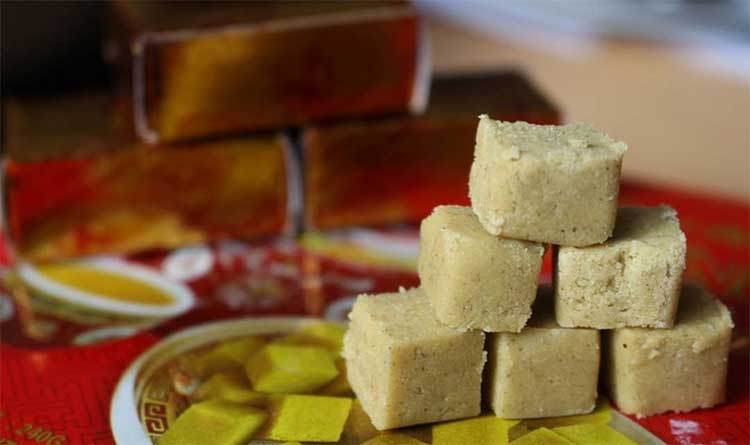
This type of cake is suitable for diners of all ages. (Photo: Vnlocalfood).
Mung Bean Cake is a simple specialty from Hai Duong, a treat often served to guests and given as gifts during holidays and Tet. This cake was once offered to King Bao Dai during a visit to Hai Duong, where it received his praise. The light sweetness of mung beans enjoyed with tea creates a beautiful aspect of the local cuisine.
The main ingredients for this cake are pure mung bean flour, refined sugar, and vegetable oil. This cake appeals to diners of various ages, symbolizing the connection of generations within families during gatherings for conversation, tea drinking, and cake sharing.
Phu The Cake
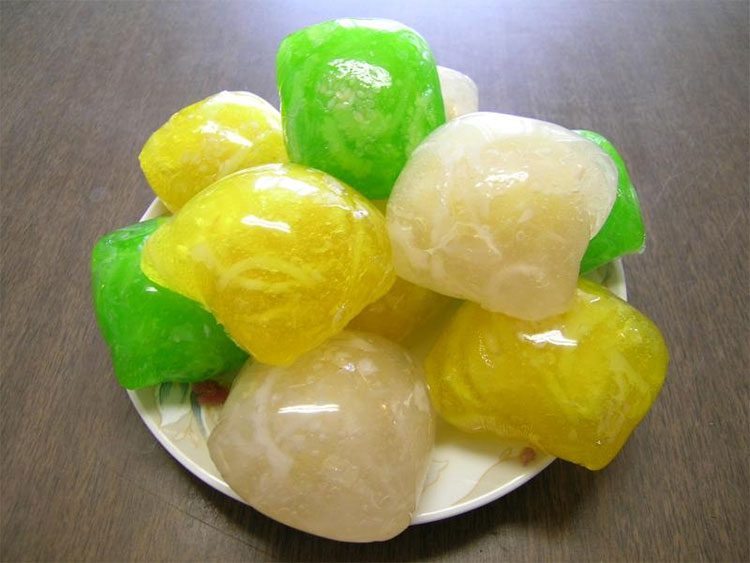
Phu The Cake is also known as Xu Xe/Su Se, depending on regional variations.
Phu The Cake, a specialty from Bac Ninh, not only appears during weddings but is also present during important holidays and Tet celebrations. This cake symbolizes the steadfast loyalty of couples. The thin layer of dough enveloping the mung bean filling represents the warm embrace and protection of marital love.
Phu The Cake is also known as Xu Xe/Su Se, varying by region. The sweet and chewy taste of glutinous rice, mung beans, and shredded coconut makes this cake an attractive dessert. At the start of the new year, enjoying sweet Phu The Cake with a cup of hot tea brings joy and renewal while reflecting on family love.
Moreover, Phu The Cake subtly embodies the philosophy of the five elements, represented by its five colors: the white of glutinous rice and coconut, the yellow of safflower used for the cake’s outer layer and mung bean filling, the black of sesame seeds, the green of leaves, and the red of the binding strings. This represents the harmony of humanity with nature, the unity among people, and the bond between spouses.
With this cake, you don’t need to pair it with anything else; if desired, it can be enjoyed with hot tea, similar to Banh In or Mung Bean Cake.
Gai Leaf Cake
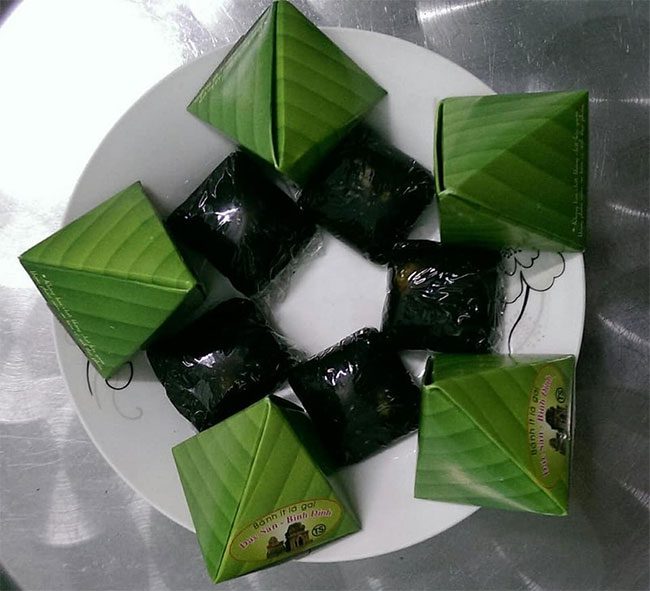
This cake has origins dating back to the time of the Hung Kings.
A beloved specialty from Binh Dinh is Gai Leaf Cake. This cake has gradually become a familiar treat during the Lunar New Year in our country.
Gai Leaf Cake is greatly appreciated during traditional Tet celebrations.
Not only is this cake attractive due to its unique flavor, but it also carries profound significance.
With a beautiful shape resembling a Cham tower, this cake has origins from the time of the Hung Kings. The youngest daughter created this cake inspired by her brothers’ Banh Chung and Banh Day, offering it to their father, the king. The king loved it and named it Gai Leaf Cake, reminiscent of his youngest daughter.
Thuan Cake
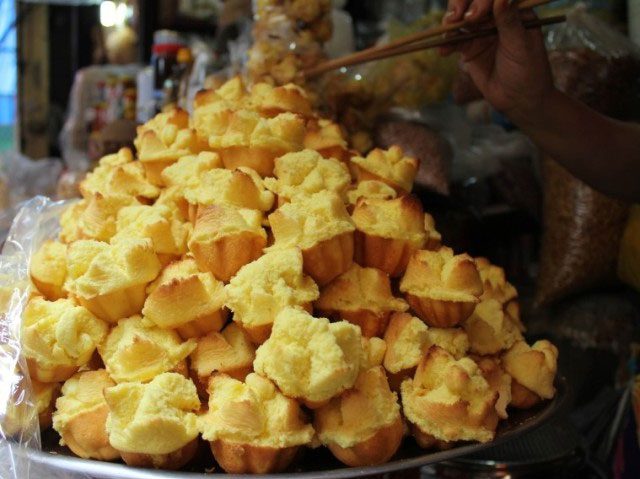
Thuan Cake is made from chicken eggs, vanilla, tapioca flour, wheat flour, and sugar…
You can easily find Thuan Cake during Tet celebrations or ancestor worship in Central and Southern Vietnam. These cakes are roughly the size of a cup and shaped like blooming apricot flowers, a flower characteristic of Tet in Central and Southern Vietnam.
Thuan Cake carries additional meaning as it conveys wishes for a peaceful, happy, and prosperous new year. Furthermore, its unique and enticing flavor makes family gatherings even more complete.
To Cake
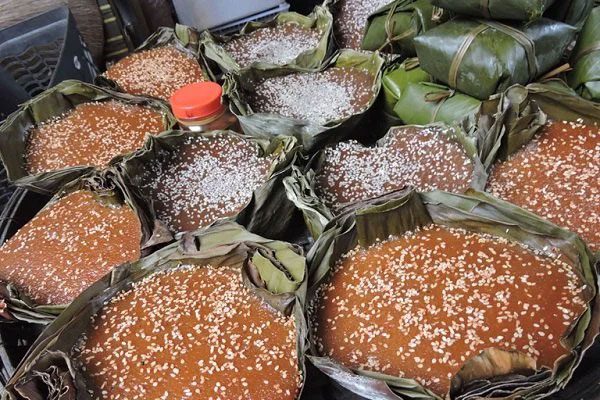
This dish is a wonderful combination of ginger, glutinous rice, and brown sugar.
During the Lunar New Year, people from Quang region and Central Vietnam consume To Cake. This dish beautifully combines the spicy warmth of ginger, the richness of glutinous rice, and the sweet fragrance of brown sugar. When making the cake, the mold is lined with bamboo and tightly secured to prevent it from bursting. The surface of the cake is sprinkled with fragrant sesame seeds.
Khau Cake
This traditional cake is indispensable during the Lunar New Year for the Tay people. Making Khau Cake is time-consuming due to the lengthy process of toasting rice, grinding flour, lowering the earth, grinding sugar, making filling, kneading dough, and pressing into molds…
The ingredients for this cake consist of glutinous rice flour—symbolizing mother earth, the fragrant aroma from sesame representing harmony and unity, and the sweetness of sugar and fragrant white wine representing love…




















































